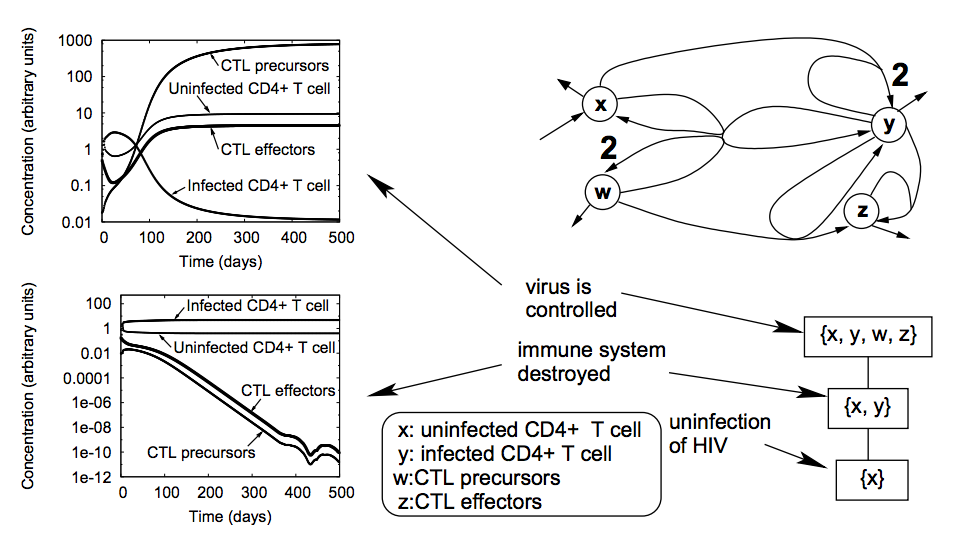
Naoki Matsumaru, Pietro Speroni di Fenizio, Florian Centler, Peter Dittrich (2005)
A Case Study of Chemical Organization Theory Applied to Virus Dynamics
in: J. T. Kim (Ed.), Systems Biology Workshop at ECAL 2005, Workshop Proceedings CD-ROM, 5-9 Septmebner 2005, Kent, UK
Abstract:
Chemical Organisation Theory has been proposed to provide a new perspective to study complex dynamical reaction networks. It decomposes a reaction network into overlapping sub-networks called organisations. In order to evaluate the usefulness of this approach we apply the theory to a model by Wodarz and Nowak (PNAS 1999) describing the interaction of a virus (HIV) with immune system cells. We found three organisations, one above the other, which imply two treatment strategies: One that tries to move the system into the smallest organisation containing no virus, and a second one, which is actually used in practice, moving the system into the largest organisation, which contains the virus in addition to an immune response controlling the virus.